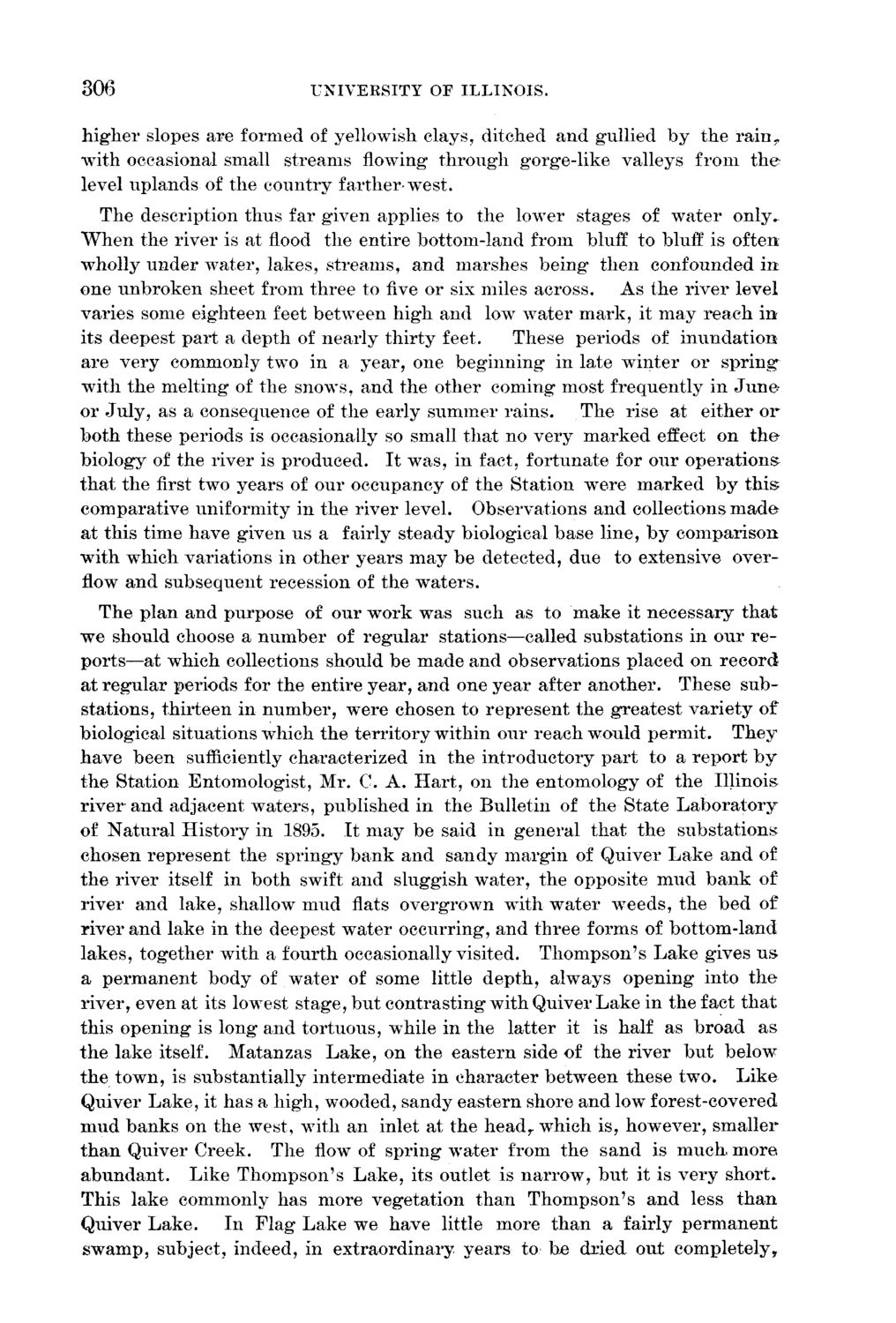| |
| |
Caption: Board of Trustees Minutes - 1896
This is a reduced-resolution page image for fast online browsing.

EXTRACTED TEXT FROM PAGE:
306 UNIVERSITY OF ILLINOIS. higher slopes are formed of yellowish clays, ditched and gullied by the rain r with occasional small streams flowing through gorge-like valleys from the level uplands of the country farther-west. The description thus far given applies to the lower stages of water only. When the river is at flood the entire bottom-land from bluff to bluff is often wholly under water, lakes, streams, and marshes being then confounded in one unbroken sheet from three to five or six miles across. As the river level varies some eighteen feet between high and low water mark, it may reach in its deepest part a depth of nearly thirty feet. These periods of inundation are very commonly two in a year, one beginning in late winter or spring with the melting of the snows, and the other coming most frequently in J u n e or July, as a consequence of the early summer rains. The rise at either or both these periods is occasionally so small that no very marked effect on the biology of the river is produced. It was, in fact, fortunate for our operations that the first two years of our occupancy of the Station were marked by this comparative uniformity in the river level. Observations and collections made at this time have given us a fairly steady biological base line, by comparison with which variations in other years may be detected, due to extensive overflow and subsequent recession of the waters. The plan and purpose of our work was such as to make it necessary that we should choose a number of regular stations—called substations in our reports—at which collections should be made and observations placed on record at regular periods for the entire year, and one year after another. These substations, thirteen in number, were chosen to represent the greatest variety of biological situations which the territory within our reach would permit. They have been sufficiently characterized in the introductory part to a report by the Station Entomologist, Mr. C. A. Hart, on the entomology of the Illinois river and adjacent waters, published in the Bulletin of the State Laboratory of Natural History in 1895. It may be said in general that the substations chosen represent the springy bank and sandy margin of Quiver Lake and of the river itself in both swift and sluggish water, the opposite mud bank of river and lake, shallow mud flats overgrown with water weeds, the bed of river and lake in the deepest water occurring, and three forms of bottom-land lakes, together with a fourth occasionally visited. Thompson's Lake gives us» a permanent body of water of some little depth, always opening into the river, even at its lowest stage, but contrasting with Quiver Lake in the fact that this opening is long and tortuous, while in the latter it is half as broad as the lake itself. Matanzas Lake, on the eastern side of the river but below the town, is substantially intermediate in character between these two. Like Quiver Lake, it has a high, wooded, sandy eastern shore and low forest-covered mud banks on the west, with an inlet at the head r which is, however, smaller than Quiver Creek. The flow of spring water from the sand is much, more abundant. Like Thompson's Lake, its outlet is narrow, but it is very short. This lake commonly has more vegetation than Thompson's and less than Quiver Lake. In Flag Lake we have little more than a fairly permanent swamp, subject, indeed, in extraordinary years to be dried out completely,,
| |